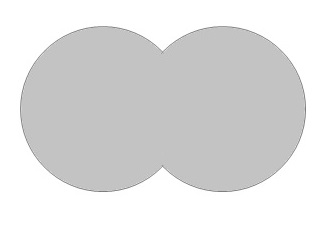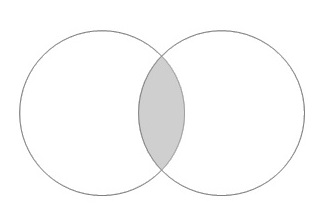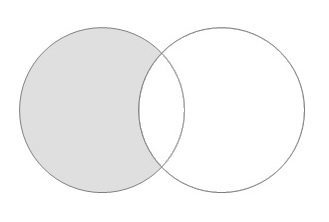
- JavaFX Tutorial
- JavaFX - Home
- JavaFX - Overview
- JavaFX Installation and Architecture
- JavaFX - Installation Using Netbeans
- JavaFX - Installation Using Eclipse
- JavaFX - Installation using Visual Studio Code
- JavaFX - Architecture
- JavaFX - Application
- JavaFX 2D Shapes
- JavaFX - 2D Shapes
- JavaFX - Drawing a Line
- JavaFX - Drawing a Rectangle
- JavaFX - Drawing a Rounded Rectangle
- JavaFX - Drawing a Circle
- JavaFX - Drawing an Ellipse
- JavaFX - Drawing a Polygon
- JavaFX - Drawing a Polyline
- JavaFX - Drawing a Cubic Curve
- JavaFX - Drawing a Quad Curve
- JavaFX - Drawing an Arc
- JavaFX - Drawing an SVGPath
- JavaFX Properties of 2D Objects
- JavaFX - Stroke Type Property
- JavaFX - Stroke Width Property
- JavaFX - Stroke Fill Property
- JavaFX - Stroke Property
- JavaFX - Stroke Line Join Property
- JavaFX - Stroke Miter Limit Property
- JavaFX - Stroke Line Cap Property
- JavaFX - Smooth Property
- Operations on 2D Objects
- JavaFX - 2D Shapes Operations
- JavaFX - Union Operation
- JavaFX - Intersection Operation
- JavaFX - Subtraction Operation
- JavaFX Color and Texture
- JavaFX - Colors
- JavaFX Text
- JavaFX - Text
- JavaFX Effects
- JavaFX - Effects
- JavaFX Transformations
- JavaFX - Transformations
- JavaFX Animations
- JavaFX - Animations
- JavaFX Images
- JavaFX - Images
- JavaFX 3D Shapes
- JavaFX - 3D Shapes
- JavaFX - Creating a Box
- JavaFX - Creating a Cylinder
- JavaFX - Creating a Sphere
- Properties of 3D Objects
- JavaFX - Cull Face Property
- JavaFX - Drawing Modes Property
- JavaFX - Material Property
- JavaFX Event Handling
- JavaFX - Event Handling
- JavaFX - Using Convenience Methods
- JavaFX - Event Filters
- JavaFX - Event Handlers
- JavaFX UI Controls
- JavaFX - UI Controls
- JavaFX - ListView
- JavaFX - Accordion
- JavaFX - ButtonBar
- JavaFX - ChoiceBox
- JavaFX - HTMLEditor
- JavaFX - MenuBar
- JavaFX - Pagination
- JavaFX - ProgressIndicator
- JavaFX - ScrollPane
- JavaFX - Separator
- JavaFX - Slider
- JavaFX - Spinner
- JavaFX - SplitPane
- JavaFX - TableView
- JavaFX - TabPane
- JavaFX - ToolBar
- JavaFX - TreeView
- JavaFX - Label
- JavaFX - CheckBox
- JavaFX - RadioButton
- JavaFX - TextField
- JavaFX - PasswordField
- JavaFX - FileChooser
- JavaFX - Hyperlink
- JavaFX - Tooltip
- JavaFX - Alert
- JavaFX - DatePicker
- JavaFX - TextArea
- JavaFX Charts
- JavaFX - Charts
- JavaFX - Creating Pie Chart
- JavaFX - Creating Line Chart
- JavaFX - Creating Area Chart
- JavaFX - Creating Bar Chart
- JavaFX - Creating Bubble Chart
- JavaFX - Creating Scatter Chart
- JavaFX - Creating Stacked Area Chart
- JavaFX - Creating Stacked Bar Chart
- JavaFX Layout Panes
- JavaFX - Layout Panes
- JavaFX - HBox Layout
- JavaFX - VBox Layout
- JavaFX - BorderPane Layout
- JavaFX - StackPane Layout
- JavaFX - TextFlow Layout
- JavaFX - AnchorPane Layout
- JavaFX - TilePane Layout
- JavaFX - GridPane Layout
- JavaFX - FlowPane Layout
- JavaFX CSS
- JavaFX - CSS
- Media with JavaFX
- JavaFX - Playing Video
- JavaFX Useful Resources
- JavaFX - Quick Guide
- JavaFX - Useful Resources
- JavaFX - Discussion
JavaFX - 2D Shapes(Objects) Operations
Geometrically, a 2D shape is defined as any figure that can be displayed on a two-dimensional plane. Various applications these days make use of such shapes to develop an element or improve the look of their interface.
For example, consider any mobile game application. These games contain various 2D shapes on their interface in order to enhance the user experience of the game. Or, a template editor where several 2D shapes are used to give options to the application user.
JavaFX provides various nodes to create these 2D shapes like Line, Circle, Rectangle, other Polygons etc. However, to offer permutations and combinations of these shapes, JavaFX also allows you to perform some operations on them. In this chapter, let us briefly learn more about the operations provided.
JavaFX Operations on 2D Shapes
JavaFX provides various operations mainly to create complex shapes from the simpler shapes. For instance, we learned how to draw a house in the previous chapters of 2D shapes. We had to use several shapes like rectangles, lines etc. to create the final complex house shape; by making use of these operations, we can either merge two shapes easily or remove some area from it.
There are three operations available in JavaFX that can be performed on 2D shapes. They are listed below −
Usually, 2D shapes have a certain area they cover in an application. These three operations are performed on the area covered by these shapes by adding the area together, or subtracting a shape area from another shape, etc.
Union Operation
Union Operation is generally defined as the combination of two or more elements in an application. In JavaFX, a union operation can be performed on 2D shapes where two or more shapes are taken as inputs and combines the area of them together. This operation is fundamentally represented in the form of a following venn diagram −

Intersection Operation
Intersection operation retains the common elements from two or more sets. When used with 2D shapes in JavaFX, the common area of two or more shapes will be retained. This is also known as the intersected area of the objects. Look at the image shown below for better understanding.

Subtraction Operation
Subtraction Operation, also known as the Difference Operation, subtracts the elements of one set from another set. If some elements are not present in the first set (the set from which another set is being subtracted), they are ignored. In JavaFX, an area of a 2D shape is subtracted from the area of another 2D shape as long as they intersect.
